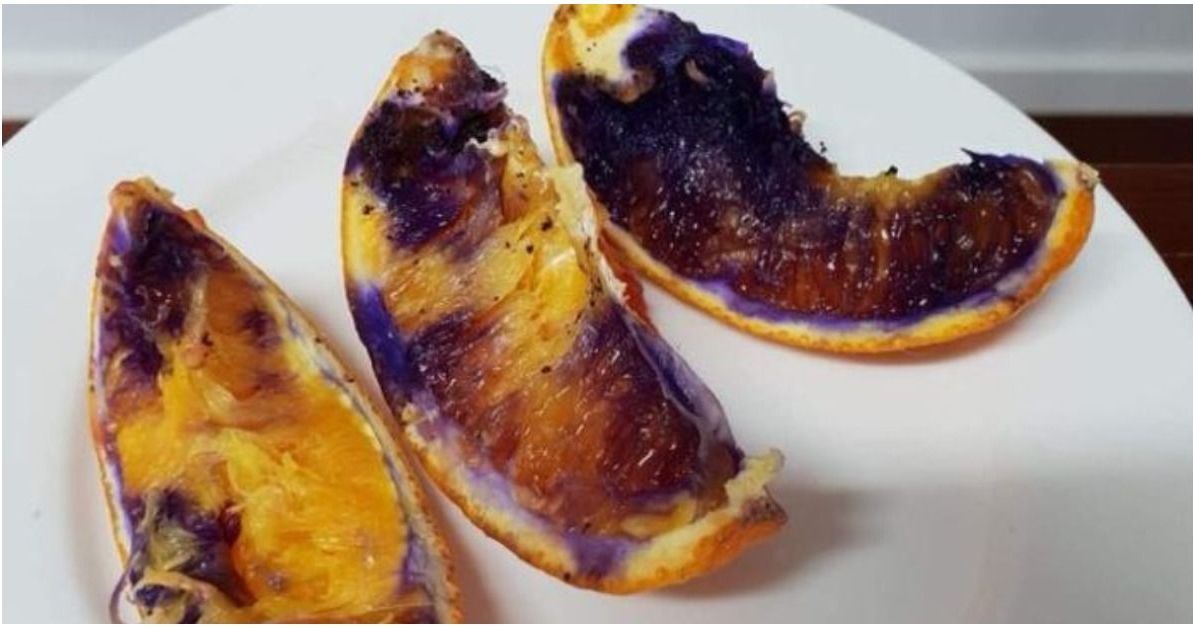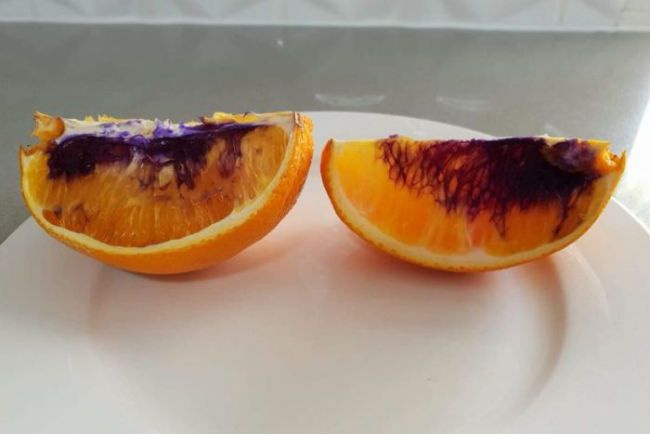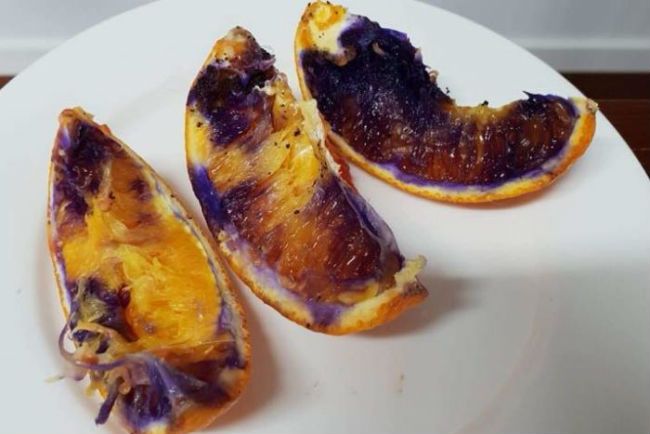Here's a riddle for you: when is an orange not an orange?
When it turns purple.
It sounds like a bad joke, but that's exactly what happened to a fruit Neti Moffitt served to her young son.
At first, no one could explain the gross transformation. But now, scientists say they've solved the mystery.
"It looks like someone's dipped it on an ink pad, which I guarantee you we haven't."
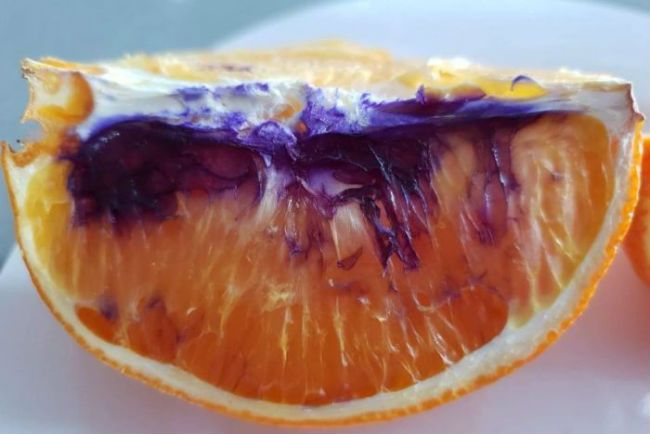
Moffitt woke up at her home in Brisbane, Australia to a surprising discovery last month.
Sections of sliced orange - which her son had eaten part of the day before - were turning a dark purple color.
"It looks like someone's dipped it on an ink pad, which I guarantee you we haven't," she told the Australian Broadcasting Corporation.
"I went rifling through the rubbish bin for the three bits eaten by my son, and sure enough they were more-so purple than the ones left out on the bench," she added.
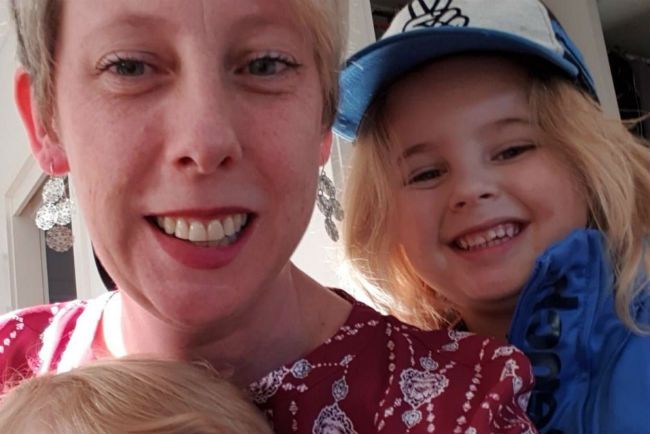
Horrified and concerned for her son, Moffitt sent the orange slices away for tests. As she waited to learn more, photos of her bizarre orange slices puzzled the internet.
"I posted it on Facebook and everyone has their own speculation to what it could be," she explained, "but no-one's in a field where they have any scientific proof or evidence."
Theories for the color change shared online included food coloring added to the orange, a fungus, or a native species of spores.
To make things even more confusing, other oranges from Queensland had turned purple in 2015, but that case was still unsolved.
But this time, health officials were able to solve the mystery of the purple orange, and what they discovered was pretty surprising.
"My first thought was I hope it has had no ill effect on my child."
Health officials from Queensland's Health Forensic and Scientific Services shared their findings after "numerous tests" on the oranges and kitchen tools.
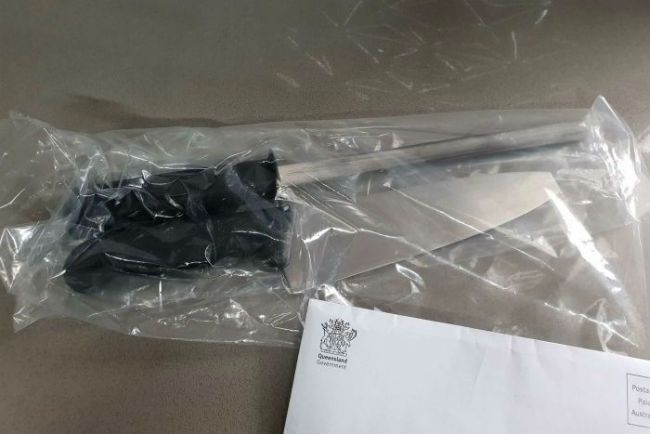
It turned out that Moffitt's knife had caused the color change, not the fruit itself.
Officials said that oranges contain antioxidants call anthocyanins. These compounds reacted to the iron in the kitchen knife, which had been sharpened "a night or two" before the oranges were cut.
The reaction and color change was completely natural, and the orange was still safe to eat.
While her son was obviously doing well, Moffitt said it felt "brilliant" to know the slices wouldn't hurt him.
"My first thought was I hope it has had no ill effect on my child. But he's fine, absolutely not a drama."
Stewart Carswell, the chief chemist for the health bureau, said that even his agency was stumped by the mystery of the purple orange, and solving it was a nice change from their more serious work.
"We see samples that range from blood, urine, water, soil, fish and foodstuffs. So to have an orange come through was really different for our team," he said in a statement.
"I'm glad we could find an answer," Moffitt said, "that would've been a real headscratcher otherwise."
